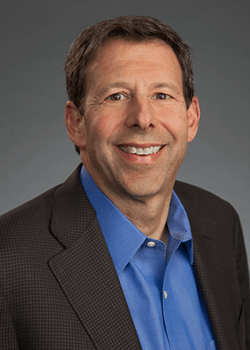Don’t Let Those Top Prices Scare You Away

In a recent New York Times article, “Broadway Tickets, for the Price of an Economics Lesson,” there was a lot of ink about the top prices at the Broadway box offices,particularly for Hello Dolly, $748, and Hamilton, $849—with mention of secondary market prices ranging from $1,450 – $2,500. Those of us in the arts have certainly heard about these numbers, and also about the practice of dynamic pricing, which frequently gets the blame for these prices.
But there’s another side to the story. Thomas Schumacher, president of the Disney Theatrical Group was quoted in the article as saying “People have been whipped into a frenzy by the top prices.” And he’s exactly right. A mention of an astronomical top price (either at the box or through the secondary market), makes many current and prospective arts patrons assume that all, or most all, tickets are at that top price. And they are usually wrong.
Let’s look at some data: According to The Broadway League, the national trade association for the Broadway industry, for the week ending 6/11/17 there were 35 productions on Broadway—25 musicals and 10 plays. The table below shows average top price and average price paid on Broadway that week (note these are box office figures and do not include secondary market data):
| All Productions (n=35) | Musicals (n=25) | Plays (n=10) | |
| Average Top Price | $291.99 | $319.30 | $226.67 |
| Average Price Paid | $108.85 | $123.04 | $74.22 |
| % avg price paid of top price | 37% | 39% | 33% |
What can we glean from this data? First, it’s clear that not everyone is paying full price. Secondly, top price paid and average price differ substantially between musicals than plays.
Broadway is a unique industry crammed into 15 or so blocks in New York City. And it’s a very tough business. There are huge risks. You have no idea how long your show will run. Those long-running shows are the anomaly. A study by Broadway producer Ken Davenport, published on theproducersperspective.com, looked at all Broadway shows that opened between 1994 and 2014. Only 21% recouped their investment. Which means that if you invested in a Broadway show during that time you had about an 80% chance at losing your money.
But there is a world beyond Broadway, and it’s called “The Road”. And the road is where a) many people first experience a Broadway musical or play and b) where some producers can recoup by touring their show around the country in mostly week-long stays.
The economics of the road are very different. Unlike Broadway, which is a commercial enterprise, most of the “road houses” are non-profit performing arts centers, where Broadway shows run mostly for a week, and there are subscribers who can make up a decent percentage of tickets sold. Don’t get me wrong here, touring Broadway also has its challenges—remember, most of the performing arts centers don’t survive on ticket income alone. They rely on donations and grants to help them approach break even.
And their pricing model is way different that Broadway. Broadway League road data from that same week of 6/11/17 tracked around 25 touring shows—mostly musicals. Some of the shows were in their first or second year of touring and a few, like The Lion King, Wicked, and The Book of Mormon have been on the road for years.
Here’s the data from that week on the road:
- Average top price on the road: $110.27. Half of the road shows had top prices over $100. In contrast, every Broadway show had a top price approaching or above $200.
- Average price paid on the road: $76.30. That’s 69% of the average top price, and right around the average price for a Broadway play.
So what are we to make of all of this? A few things:
- Don’t let the top price scare you away. There are many other options.
- Consider seeing a play. Here’s a quote from Andre Bishop, artistic director of Lincoln Center Theater, at the Tony Awards on June 11th: “There were four nominees for best play, and I can tell you every single one of those plays was superb . . . We don’t realize that we are in a golden age of American playwriting.”
- You can experience the thrill of theatre pretty much anywhere in America…and often at a much lower price. That tingle you get in the back of your neck when the lights go down and the curtain starts to rise? That’s not something that only happens on Broadway.
JCA Arts Marketing collaborates with cultural organizations to increase revenue, boost attendance and membership, and grow patron loyalty. We provide consulting and software services to hundreds of cultural institutions across multiple genres, including dance, museums, opera, performing arts centers, symphony, and theatre. We can help you achieve your marketing goals.

